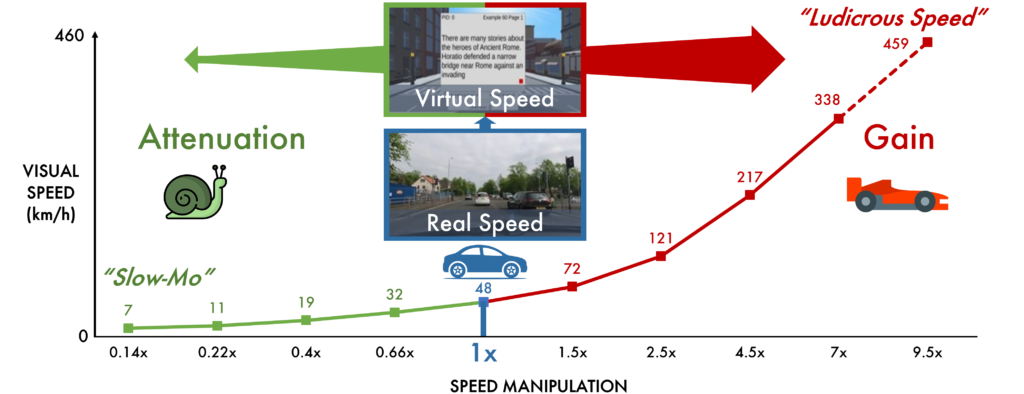CHI 2024 – From Slow-Mo to Ludicrous Speed
We are very happy to have a full paper accepted to ACM CHI 2024 in Hawai’i, on using translational gain and attenuation in VR to comfortably manipulate the perceived speed of a moving car [1]. A pre-print is available here.
Using our PassengXR motion platform, we conveyed the car’s movement to a VR headset and either increased (1.5x-9.5x) or decreased (0.66x to 0.14x) the virtual speed 1) through a cityscape during a reading/productivity task and 2) through a space station trench during a spaceship shooting game. We investigated how well passengers can detect the manipulation in speed, how it affected motion sickness, and whether it altered the perceived speed or distance of car journey.

[Bibtex]
@inproceedings{CHI24Ludicrous,
author = {Pohlmann, Katharina Margareta Teresa and Wilson, Graham and Li, Gang and Mcgill, Mark and Brewster, Stephen Anthony},
title = {From Slow-Mo to Ludicrous Speed: Comfortably Manipulating
the Perception of Linear In-Car VR Motion Through Vehicular
Translational Gain and Attenuation},
year = {2024},
publisher = {Association for Computing Machinery},
address = {New York, NY, USA},
booktitle = {Proceedings of the 2024 CHI Conference on Human Factors in Computing Systems},
articleno = {232},
numpages = {19},
location = {, Hawai'i, USA, },
series = {CHI '24}
}
![[pdf]](https://viajero-project.org/wp-content/plugins/papercite/img/pdf.png)